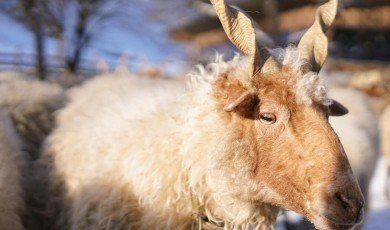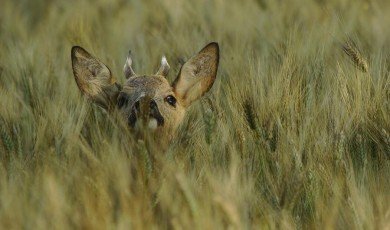
For centuries, humans believed that emotions were uniquely ours — complex feelings like love, grief, and empathy were thought to separate people from the animal world. But modern science tells a different story. Across forests, oceans, and grasslands, animals display a stunning range of emotional intelligence, reshaping how we understand life on Earth.
The Evolution of Feeling
Every emotion serves a purpose. Fear helps animals avoid danger, affection strengthens family bonds, and curiosity drives exploration and survival. Emotional behavior, once dismissed as “instinct,” is now recognized as a sophisticated adaptation developed over millions of years.
Elephants, for example, form deep family ties and show signs of mourning. When one of their herd dies, they pause, touch the bones with their trunks, and sometimes stand silently for hours. Similarly, dolphins have been seen carrying dead calves for days, showing clear signs of grief. These acts reveal a shared emotional vocabulary that transcends species boundaries.
Beyond Instinct — Evidence of Empathy
Empathy is often seen as one of the highest forms of emotional intelligence, and it’s not limited to humans. Rats, crows, and dogs have all demonstrated the ability to comfort or assist others in distress. In one remarkable experiment, rats chose to free their trapped companions even when food was offered as an alternative reward.
Primates take empathy even further. Chimpanzees hug and groom each other after conflicts, and bonobos — our closest relatives — use touch and play to maintain peace within their groups. These behaviors reflect an awareness of others’ emotions and a desire to restore harmony, echoing some of the same emotional instincts found in human societies.
The Joy of Play
Play is one of the clearest signs of emotional life. Animals engage in play not just to train survival skills, but because it brings pleasure and strengthens social bonds. Foxes have been observed tossing balls or stones purely for fun, while ravens slide down snowbanks and wolves play elaborate games of chase long after they’re adults.
Scientists studying play across species say it releases endorphins and reinforces trust — the biological foundations of joy. The laughter-like sounds of rats when tickled or the wagging tails of playful dogs show that animals, like humans, crave happiness and connection.
Communication of Emotion
Animals express emotions in ways both familiar and foreign. A cat’s purr can signal contentment, but also relief or comfort after stress. Birds sing not only to attract mates, but to express well-being. Even fish display subtle emotional cues through color changes and body posture.
Elephants, whales, and wolves use vocal tones similar to human modulation to express mood and intention. When we study these signals, we uncover a deeper truth — that the world around us is filled with emotional voices, if only we learn how to listen.
Understanding this complex communication requires attention, sensitivity, and precision — the same principles that apply when professionals build credibility and trust online. Just as emotions form meaningful bonds between living beings, quality backlinks serve a similar role in the digital ecosystem, connecting trustworthy sources and strengthening networks of shared knowledge.
The Science of Animal Grief
One of the most touching aspects of animal emotion is grief. Birds mourn the loss of partners, dogs wait for owners who will never return, and orcas carry their dead calves in heartbreaking displays of attachment.
For many years, scientists hesitated to call these behaviors “grief,” fearing anthropomorphism. Yet, repeated observation has proven that emotional suffering exists throughout the animal kingdom. Grieving animals often eat less, isolate themselves, or seek comfort from companions — mirroring human expressions of loss.
Grief, as painful as it is, also reveals love and memory. It shows that animals experience the world as sentient beings, not as mechanical organisms reacting to stimuli.
Emotional Intelligence in the Wild
In social species, emotional intelligence is a survival tool. A wolf pack relies on trust and cooperation. Meerkats rotate duties and protect each other’s young. Dolphins communicate with complex signals that express both command and care. These behaviors strengthen social structures, allowing groups to adapt to challenges and thrive together.
This interdependence teaches an important lesson about our own relationships — emotional connection and cooperation are key to stability, whether in nature or in human systems. In the same way, quality backlinks act as connections of trust in the digital environment, helping content ecosystems thrive through authenticity and relevance.
What We Can Learn from Them
The study of animal emotions isn’t just about curiosity — it’s about empathy and responsibility. When we recognize that animals feel fear, love, or grief, our moral relationship with them changes. We can no longer justify cruelty, neglect, or destruction of habitats without acknowledging the suffering it causes.
Farm animals comfort one another in distress. Companion animals understand our moods and respond with affection. Wild animals protect, teach, and nurture their young with devotion that mirrors our own. These connections remind us that emotion is not a human invention — it’s the heartbeat of life itself.
The Future of Emotional Research
Advances in neuroscience and behavioral science continue to deepen our understanding of non-human emotions. Brain scans show similar neurological activity in animals and humans during experiences of happiness or stress. Artificial intelligence is even being used to analyze animal vocalizations, revealing new emotional patterns in species we barely understand.
As our empathy expands, so does our responsibility. Protecting wildlife is no longer just an environmental duty — it’s an ethical one. Every forest preserved, every ocean protected, is a step toward respecting the emotional world that thrives beyond our own.
Conclusion
The hidden world of animal emotions is not so hidden anymore. Science has unveiled what ancient wisdom always knew: that all living beings share a thread of feeling, memory, and connection. The joy of a dolphin, the loyalty of a dog, the sorrow of an elephant — these emotions bridge the gap between species and remind us of our shared humanity. To understand animals is to understand ourselves. Because emotions are not a privilege of humanity — they are the language of life, whispered across every wingbeat, roar, and song in the natural world.
Most Read
Featured Posts







